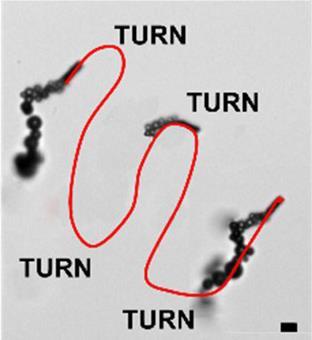 Micromotors have been used for a wide range of applications, from hydrogen generation and bacteria capture, and now scientists from the University of Alcalá, Spain have utilised these useful micromachines in a lab-on-a-chip device. The little machines can navigate through the confined space to carry out fluorescence-based detection and even transport cargo in a complex medium that simulates blood plasma. There is no need for complex valves or pumps, just a simple magnetic field.
Micromotors have been used for a wide range of applications, from hydrogen generation and bacteria capture, and now scientists from the University of Alcalá, Spain have utilised these useful micromachines in a lab-on-a-chip device. The little machines can navigate through the confined space to carry out fluorescence-based detection and even transport cargo in a complex medium that simulates blood plasma. There is no need for complex valves or pumps, just a simple magnetic field.
Described by nanobioelectronics and nanomotor experts as “a wonderful example” of carbon-based rockets for active transport showcasing a “potential breakthrough” as one of “very few practical applications”. Of particular importance is the incorporation of an anti-fouling layer that allows the micromotors to travel through complex mediums without degrading. This has the potential to overcome on of the key limiting factors in the advancement of biomedical applications in this field.
Read the full article in Chemistry World.










